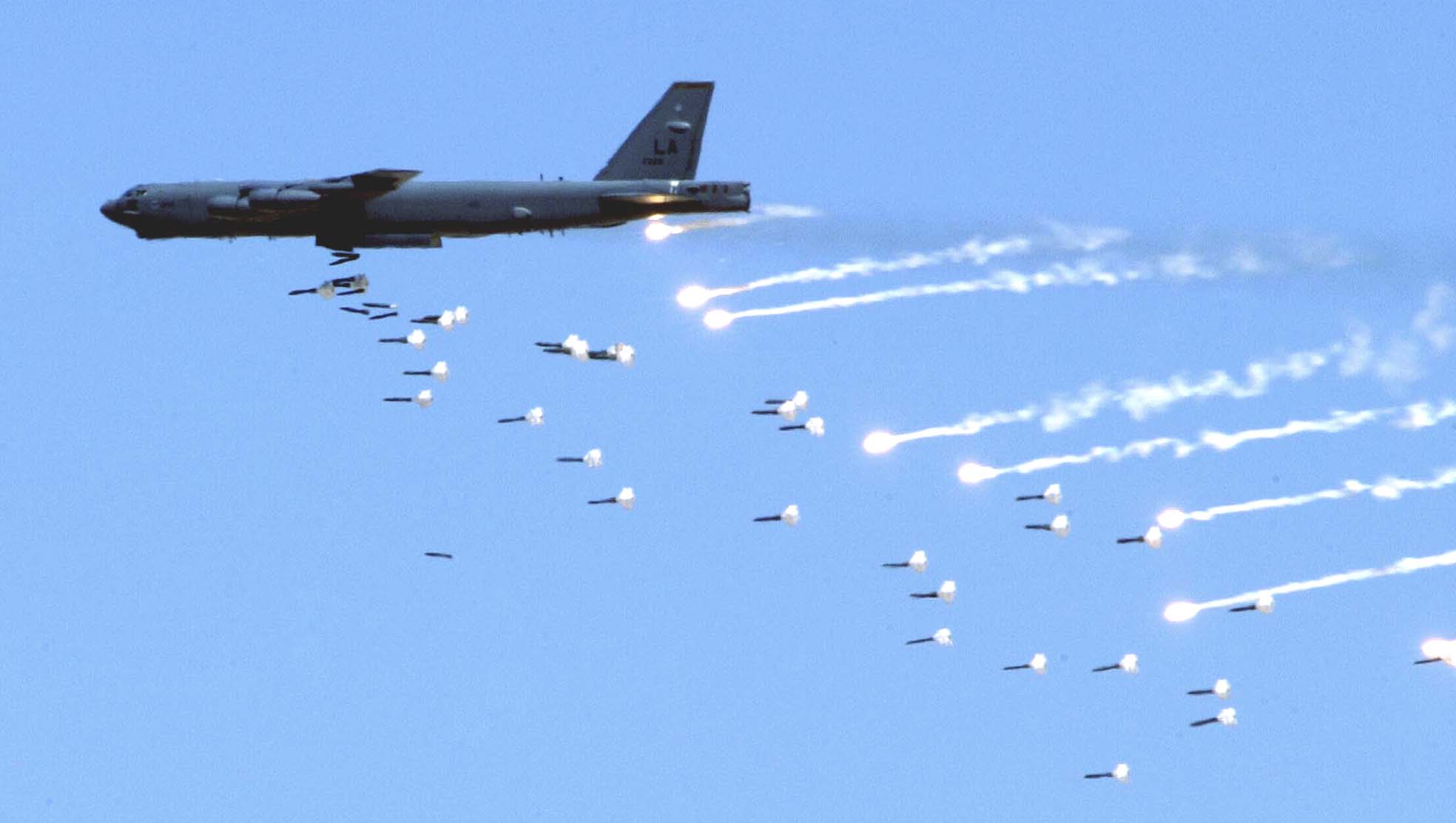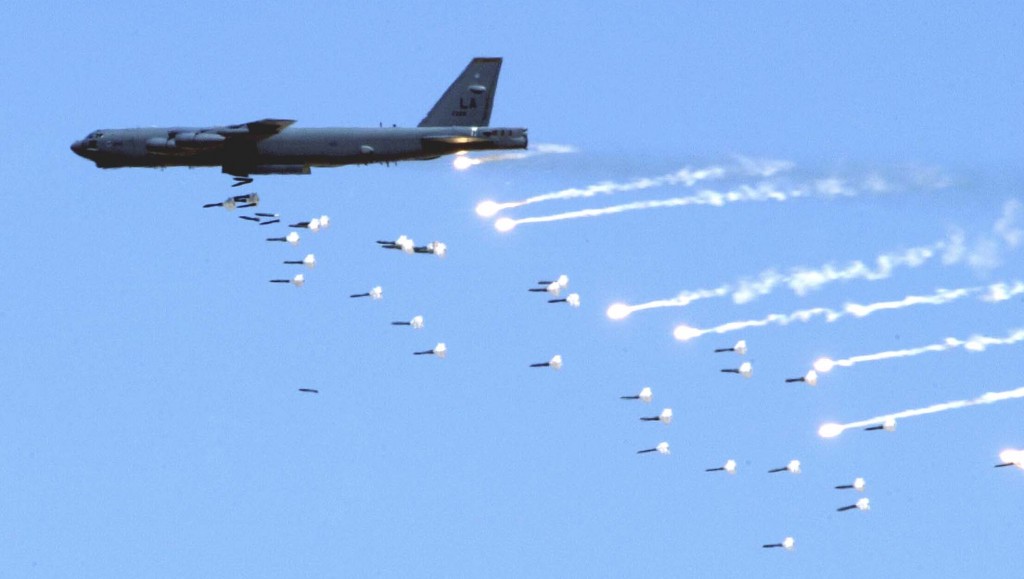Sourced : AFP
The US Air Force for the first time deployed a B-52 bomber against the Islamic State of Iraq and Syria (ISIS), the Pentagon said Wednesday as it ramps up a 20-month campaign to smash the jihadists.
The bombing mission, in which a hulking B-52 destroyed a weapons storage facility south of Mosul, comes the same week that Defense Secretary Ash Carter visited Baghdad and announced extra US troops, cash and equipment for the anti-ISIS campaign in Iraq.
In other signs of an increasing tempo, US commandos working with Kurdish troops conducted a raid targeting a senior ISIS group figure and the Pentagon said it has changed how air strikes risking civilian deaths are approved.
Under the new rules, authority now comes from the commanding three-star US general in Baghdad, instead of going through a four-star at the US Central Command’s headquarters in Florida.
Baghdad-based military spokesman Colonel Steve Warren insisted the changes do not lessen oversight standards in determining when civilian losses are an acceptable risk.
“This does not translate to more civilian casualties, this translates to a more rapid execution of strikes,” Warren said.
The Pentagon has acknowledged 26 civilian deaths due to US-led coalition strikes since the campaign began in August 2014 in Iraq, and credits the use of guided missiles in keeping the number relatively low — though independent observers say the figure is far higher.
More US troops
Carter this week announced an additional 217 US forces would be deployed to Iraq as advisors, pushing the official count there past 4,000.
The Pentagon has also offered Apache attack helicopters for use in an eventual push on Mosul, Iraq’s second city and which is under control of the ISIS group.
Separately, Danish lawmakers have approved a plan to commit seven F-16 warplanes, a transport aircraft and 400 military personnel to expand its fight against the extremists.
Monday’s strike by a B-52 Stratofortress blew up an ISIS weapons storage facility in the town of Qayyarah, about 35 miles (60 kilometers) south of Mosul.
The enormous planes, originally designed in the 1950s, became a symbol of US might during the Cold War and the aircraft was used to conduct carpet bombing in Vietnam.
Warren said the B-52s are only being armed with guided bombs.
“There are memories in the collective unconscious of B-52s, decades ago, doing… arguably indiscriminate bombing,” Warren said.
“Those days are long gone. The B-52 is a precision-strike weapons platform and it will conduct the same type of precision strikes that we have seen for the last 20 months.”
Several B-52s arrived in Qatar earlier this month to replace a contingent of newer B-1 bombers that had been working in Iraq and Syria for about a year.
Warren also announced that US commandos in northern Iraq had targeted Suleiman Abd Shabib al-Jabouri, “one of ISIL’s military emirs and an ISIL war council member.”
The Kurdish regional security council said Jabouri was killed in the raid, conducted jointly with Kurdish fighters.
‘Shoving match’
The US military has since 2014 led an international coalition against the ISIS in Iraq and Syria after the jihadists captured vast areas of territory across the two countries.
Despite major gains, including the recapture of the Iraqi city of Ramadi, the coalition has still not chased ISIS fighters from Raqa in Syria or Mosul, as well as several other important towns.
In Syria, vetted Syrian opposition fighters are clashing with ISIS fighters in the north, especially around the Manbij region, but have recently lost some ground to the jihadists.
It “has developed into a shoving match,” Warren said. “We will continue to pressure ISIL but we expect them to fight hard to hold their ground.”
Additionally, the ISIS group has tightened the noose on a regime-held enclave in eastern Syria, overrunning part of the city of Deir Ezzor, the Syrian Observatory for Human Rights said.
Elsewhere in Syria, a Russian- and US-brokered ceasefire grew ever more fragile as violence continued to flare up around Aleppo. ISIS and other jihadist groups are not party to the February “cessation of hostilities.”


